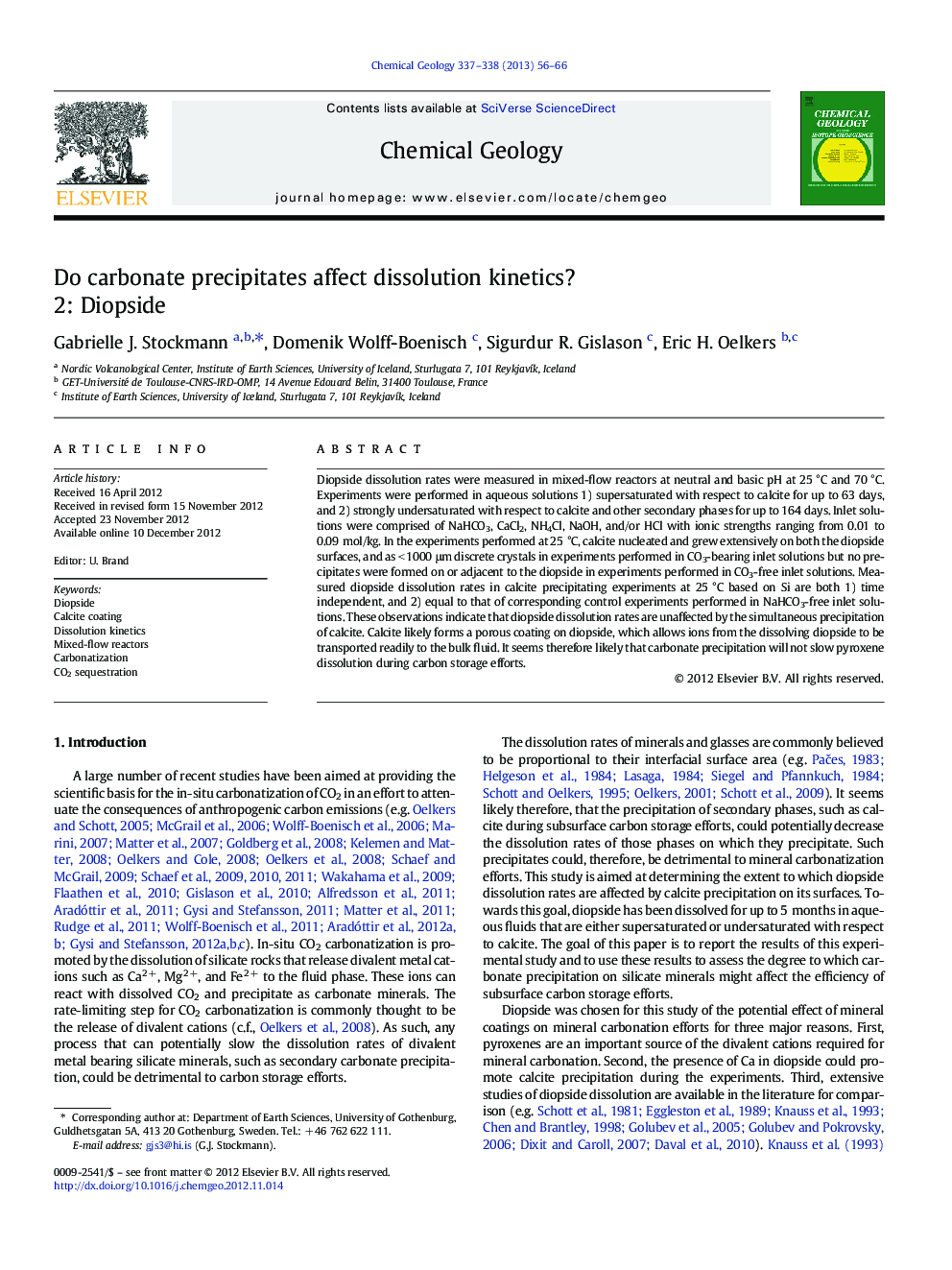| Article ID | Journal | Published Year | Pages | File Type |
|---|---|---|---|---|
| 4699205 | Chemical Geology | 2013 | 11 Pages |
Diopside dissolution rates were measured in mixed-flow reactors at neutral and basic pH at 25 °C and 70 °C. Experiments were performed in aqueous solutions 1) supersaturated with respect to calcite for up to 63 days, and 2) strongly undersaturated with respect to calcite and other secondary phases for up to 164 days. Inlet solutions were comprised of NaHCO3, CaCl2, NH4Cl, NaOH, and/or HCl with ionic strengths ranging from 0.01 to 0.09 mol/kg. In the experiments performed at 25 °C, calcite nucleated and grew extensively on both the diopside surfaces, and as < 1000 μm discrete crystals in experiments performed in CO3-bearing inlet solutions but no precipitates were formed on or adjacent to the diopside in experiments performed in CO3-free inlet solutions. Measured diopside dissolution rates in calcite precipitating experiments at 25 °C based on Si are both 1) time independent, and 2) equal to that of corresponding control experiments performed in NaHCO3-free inlet solutions. These observations indicate that diopside dissolution rates are unaffected by the simultaneous precipitation of calcite. Calcite likely forms a porous coating on diopside, which allows ions from the dissolving diopside to be transported readily to the bulk fluid. It seems therefore likely that carbonate precipitation will not slow pyroxene dissolution during carbon storage efforts.
► Calcite precipitates do not affect the dissolution rates of the diopside. ► Calcite coatings are observed to cover whole surfaces of diopside crystals. ► Diopside is a better nucleation template for calcite than basaltic glass. ► The results favor long-term carbon mineral sequestration in crystalline basaltic rocks.
